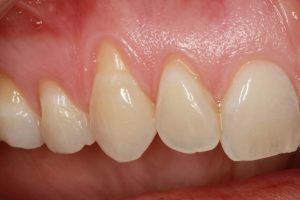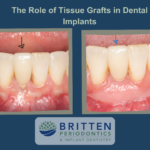Gum recession refers to the loss of gum tissue along the gumline. This can occur as a result of periodontal disease (gingivitis, periodontitis, advanced periodontitis), the natural aging process, or abrasive habits when it comes to brushing the teeth.
Why should gum recession be taken seriously?
When gum recession occurs, the root structure of the tooth becomes exposed. This means that tooth decay and other problems can affect the teeth along the gumline and beneath it. Since healthy gums are essential for a healthy mouth, getting gum recession treated is important for lasting dental wellness. When recession occurs to the point that no firm gum tissue remains, this leaves the roots of the teeth and the underlying bone relatively unprotected, which could result in root sensitivity, bacterial penetration, decay and even loss of teeth.
A gingival graft is designed to address these problems. A thin piece of tissue is taken from the roof of the mouth or gently moved over from adjacent areas to provide a stable band of attached gum tissue around the tooth. The gingival graft may be placed in such a way as to cover the exposed portion of the root, however, the main objective is to reestablish the protective barrier or layer of the gum around the tooth. Occasionally, the patient may need multiple procedures to achieve the ideal amount of root coverage.
Dr. Britten has trained in the latest minimally invasive techniques of gum grafting and can often perform the entire procedure through a pinhole incision.








